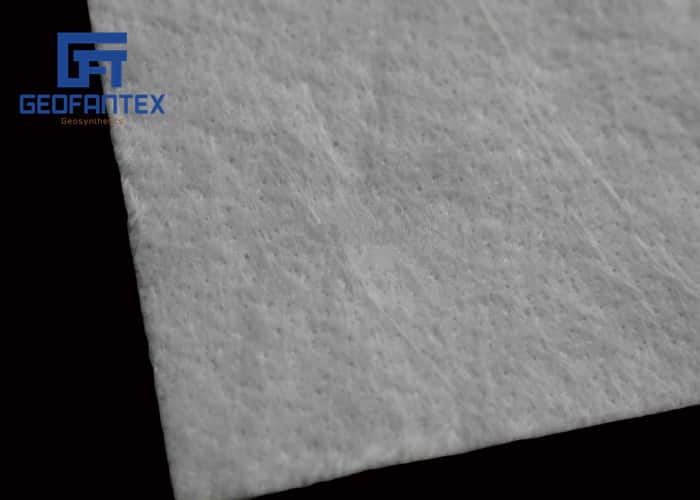Geotextiles are synthetic permeable textile materials that are used for improving soil characteristics. They can separate, filter, reinforce, protect, and drain when used in the soil.
Geotextiles are the perfect materials for several infrastructural works like roads, landfills, drainage, and other civil projects.

Types of Geotextile
The different types of geotextile materials include:
- Open-mesh or woven fabric geotextiles
- Closed fabric or non-woven geotextiles
- Knitted geotextiles
They are made with either polyester or polypropylene. Each of these geotextiles is used for specific purposes like separation, filtration drainage, reinforcement, sealing, and protection.
1. Woven Geotextiles
The woven geotextiles are made by interlocking fabric strips that strength and stability for the project where geotextiles are needed.
Woven geotextiles are made of polypropylene strips that can withstand a large amount of tension.
They are ideal for separation and reinforcement purposes because they’re nearly impermeable.
The woven geotextiles can be made of different materials, but the most common is a weave or yarn-blend. The fabrics look like plastic sheets, with the weave only visible upon close inspection.

2. Non-Woven Geotextile
The non-woven geotextiles are made from either continuous filament yarn or short-staple fibres. The fibres are usually bonded using thermal, chemical, or mechanical techniques, or by combining two or all of the methods.
The geo-fibres got from mechanical or thermal techniques usually have a thickness of 0.5 to 1mm, while chemically bonded non-woven geotextiles are thicker by up to 3mm.
They are used mainly for separation, protection, and filtration purposes in the areas of roadway, railroad, landfill, or civil and environmental projects.
The manufacturing method uses a process with endless filaments to ensure the use of high-quality materials. Non-woven geotextiles are resistant to all chemicals and biological media occurring in the soil and construction materials.
The material cannot be dissolved by water, making it safe for groundwater. They are also equipped with U-stabilizer to provide extended resistance to direct sunlight.

3. Knitted Geotextile
The knitted geotextiles are made by interlocking a series of loops of yarn together. All the knitted geosynthetics are made using a knitted technique in conjunction with some other method of geosynthetics manufacturer, like weaving.
Apart from the geotextiles explained above, other geosynthetics include geonets, geogrids, geo-cells, geomembranes, geocomposites, etc. Each of them has its features, uses, and applications.

Uses of Geotextiles
Different geotextile materials are used for various purposes, like separation, filtration, drainage, reinforcement, sealing, and protection.
1. Separation
For separation, a geotextile can be installed between two different soil materials.
The geotextile will help to separate dissimilar materials so that the required soil characteristics can be obtained.
2. Filtration
For filtration, geotextiles are used to allow water to move in both directions in a drainage system and can be used to prevent fine aggregates from moving between soil layers.
Geotextiles can be used in both vertical and horizontal applications to help solve drainage problems around the home and along the roads.
3. Reinforcement
When a geotextile is introduced in the soil for soil improvement, its design is based on factors such as:
- Friction or movement restraint
- Support of loads
- Changes in bearing failure plane
Geotextiles are also used on dams and roads being built over poorly graded soils to allow for the steeper embankment.
4. Sealing
A geotextile fabric can be filled with asphalt or other mixes to make it impermeable, thereby making it capable of stopping the flow of water in both directions.
Geotextiles can be used to prevent contamination of soil or groundwater from pollutants above.
5. Protection
For protection, geotextiles can be used to absorb stress and thus reduce or prevent damage and erosion in geotechnical structures.
Embedding geotextiles in construction can help prevent significant damage, like soil erosion and wind damage.
Now that you know about the types and uses of geotextiles, you should also know that they can only be supplied and installed by professionals.
Seek only experts with the right experience for geotextile installation in your site. For more information, contact our professional consultants.
